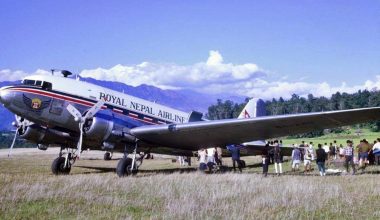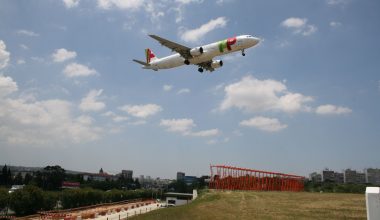-EDITORIAL
(Behind the scenes, back at the command center, there’s someone keeping a close eye on every step of your journey.)
You’re just nodding off at 30,000 feet when you hear the pilot saying you’ll be taking a different route to avoid some weather ahead. What you don’t know is that it’s not the pilot in your cockpit who likely made that decision.
For every one of the more than 100,000 flights per day worldwide, there’s a highly trained individual helping to get you to your destination that you likely don’t know about. In addition to the pilot in command, also known as the one in the cockpit of your plane, there is someone known as a flight dispatcher or flight operations officer, who plans and follows your flight every step of the way. This individual is positioned on the ground and has worked more toward mapping out your flight than the pilot you see when you board.
The flight dispatcher is distinct from the air traffic controller position, the latter of which sits in the control tower at the airport and monitors planes coming into and out of their designated air space, communicating with pilots about when they can land, taxi, and takeoff.
In what is a much more highly specialized and complex role, the flight dispatcher is employed by the airline and sits in the system operations or command center at the respective airline’s headquarters—what is essentially the central nervous system of the airline. They undergo much of the same training as a pilot and take nearly the same written exam, less the requirement to clock in flying time—one must fly 1,500 hours to become licensed to fly commercial aircraft—in order to be credentialed. (Many flight dispatchers were former pilots, so they have the flight experience, as well.) Flight dispatchers are also trained in meteorology and can read the weather radar. They’re tasked with taking a long and short view of your flight, meaning they can plan a flight four hours out and then be ready to make real-time changes for fast moving weather or unexpected variables.
Flight dispatch is a behind-the-scenes role that is critically vital to operational success. “Dispatchers are in the flight deck with pilots and, at the same time, we are thousands of miles ahead of the aircraft”, says Fraser Connell Chief Dispatcher, air traffic control and safety at Air Canada.
Beginning roughly three hours before your flight, the flight dispatcher starts creating your flight plan—the set of circumstances that guide how, where, and when your plane operates to get you safely to your destination. They look at and plan around variables like the type of aircraft, loading or weight, airport conditions, airspace restrictions, regulatory considerations, and any number of known weather events. They put together a plan that they tweak once passengers and baggage are checked in and counted and weighed, respectively. They then review the plan with the pilot and flight crew operating the aircraft.
At Air Canada, Connell meets with the dispatchers 30 minutes prior to their shift to review any special circumstances with weather systems, operational challenges, or otherwise and then monitors throughout their shifts to ensure that “the dispatcher will make operational decisions, maintaining regulatory compliance to ensure that the aircraft, passengers, and crew have a safe and comfortable flight.”
As an example of how the flight dispatcher works, Air Canada flies from Newark to Vancouver daily via the Boeing 787 Dreamliner aircraft. One of Connell’s domestic qualified dispatchers takes a seat approximately three hours before its scheduled departure time of 2300z (“zulu” is the internationally-recognized time that airlines use). “There is a good chance that the pilots and flight crew are still at the hotel in New York getting ready for their day’s flying when the dispatcher starts working on the plan,” Connell says.
As the departure time nears, the crew and customers arrive at the airport while airport staffs are preparing the aircraft and ground handling requirements. The dispatcher is still finalizing the flight plan at this time and then briefs the crew.
A flight dispatcher’s job isn’t done when the plane takes off. They follow your flight in real-time on their screens using radar technology, and are several steps ahead of the plane and the pilot at any given time, watching forthcoming weather patterns and keeping an eye on any other changing conditions, adjusting the flight plan as needed. The flight dispatcher may, for instance, spot a patch of turbulence or a thunderstorm cell that developed quickly and wasn’t visible earlier, and they then radio to the pilot to take a different route to avoid a bumpier or less safe ride. The flight dispatchers communicate with the cockpit in-air using a rudimentary text message system that use radio signals known as Aircraft Communications Address System or ACARS, to share information about everything from a change in the arrival gate to a mechanical or passenger problem, to impending weather.
During Connell’s Newark to Vancouver flight, which is five hours and 30 minutes long, another dispatcher will begin the work on the next leg of that plane’s journey, Vancouver to Brisbane, Australia.
In the United States and Canada, the flight dispatchers share legal responsibility for the safe passage of a given flight with the pilot in command, 50/50. That means if something goes wrong, both positions are equally legally liable.
In context of aviation industry of Nepal, this practice is underestimated with the fact that majority of the airline operators in Nepal do not have licensed dispatchers and conduct flight without proper dispatching.
This is a serious issue on aviation safety and the Civil Aviation Authority of Nepal (CAAN) is highly responsible for it. According to the CAAN’s spokesperson Birendra Prasad Shrestha, they are working on finding out the status of flight dispatcher. They have also advised the airline operators to come up with detail information on their practices in flight dispatching. He also added that the Pilot in Command (PIC) can verify the aircraft for takeoff in absence of dispatcher however; this practice has been demoralizing the flight dispatchers.
Airlines employ anywhere from a few to dozens of flight dispatchers, and they rotate out so that there is always someone on 24 hours a day, seven days a week. Shifts generally last eight hours and they are assigned regions and numbers of flights based on experience and what’s needed. There is generally at least one chief dispatcher like Connell, that oversees the others, ensures that the patchwork of flight plans come together to form a cohesive airline operation, and are available to troubleshoot should the need arise.
In some ways, the life of a flight dispatcher is higher stakes than the pilot in command, because while a pilot is flying one flight at a time, the flight dispatcher may be planning and monitoring multiple flights at a time—up to nearly two dozen.
About Flight Dispatcher Training in Nepal:-
Civil Aviation Academy (CAA) of Nepal conducts flight dispatcher training with a time period of ten weeks. After completion of training, a candidate must undertake OJT (On the Job Training) in any airline operators for a minimum of 90 days. Then an examination is conducted under the supervision of CAAN to award flight dispatcher license to passed candidates.
The candidate must be +2 passed and minimum 21 years of age to be eligible for applying Flight Dispatcher’s License. Those who take flight dispatcher training from any approved training organization around the world specified by CAAN must undertake 90 days OJT in any airline operator and then attend oral examination held by CAAN to acquire license for working in Nepal.






